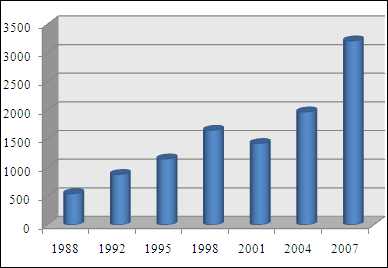
The forex market statute is scheduled to be completed by the end of July to submit to the State Bank of Vietnam for approval.
Although it is completely agreed that the forex market statute is necessary amidst the current time, there remain some disagreements about some details in this statute.
According to Truong Dinh Song, chief of the banking operation department from Vietnam Bank Association (VNBA), business code of conduct or culture are very necessary in business activities in general and in forex trading activities in particular. Thus, code of conduct in forex trading is considered top criteria in this statute.
Agreeing with the above opinion a representative from Asia Commercial Bank (ACB) said that the regulations on code of conduct remain low, so it is necessary to have more detail regulations in order to promote code of conduct in the market.
Tran Khanh from Dai A Bank-Hanoi branch said that Vietnam's forex market includes two large segments, interbank and transactions between banks and clients. However, the statute mainly promulgates rules in interbank transactions without paying due attention to transaction rules between banks and clients, added Khanh.







